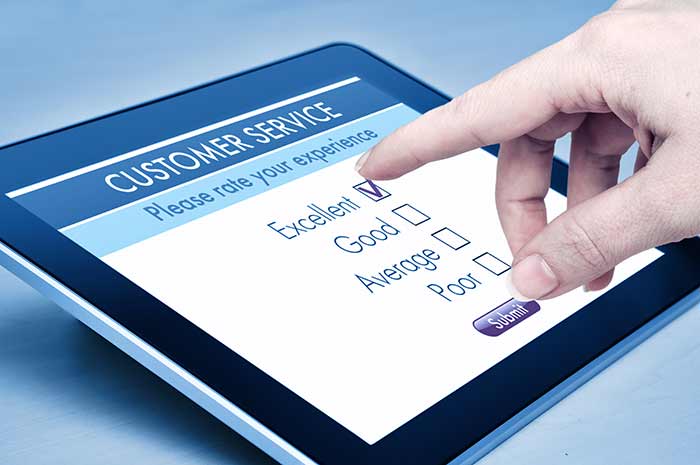5 Customer Success Metrics You Need to Start Tracking

If you want your customers to keep buying from you, you need to keep them happy.
But arguably, that’s a lot easier said than done. Consumer desires change overnight as new trends go viral. And a single bad experience can send even the most loyal shoppers to your competitors’ stores, posting negative comments all the way.
With seemingly no rhyme or reason to customer behavior and little time to respond to it, you need to take proactive steps to maintain high levels of customer satisfaction. In this post, we’ll look at five customer success metrics you can track to stay ahead of your customers. Let’s get started.
Customer Satisfaction
Customer Satisfaction Scores (CSAT) are designed to gauge how satisfied your customers are by asking one simple question: “How was your experience?” Whether answered verbally or via clickable options, the response provides a useful data point on a sliding scale. And when viewed together, the hundreds of thousands of data points paint a comprehensive picture of your customer experience.

The biggest benefit of the customer satisfaction score is the individual view it provides of each customer. Since satisfaction and dissatisfaction can be viewed in real-time, it enables you to pinpoint customers who are at risk of churning and keep track of their happiness levels as you nurture them.
Customer Sentiment
Designed to offer deep-dive insight into how your shoppers feel, customer sentiment takes a step beyond surveys to assess your customer satisfaction levels. This can happen in a few different ways.
One is employing natural language technology (specifically NLP) to automatically analyze the emotion behind each typed customer interaction. Using it, you can dig into the nuances of all sorts of text-based conversations – including live chat, email, SMS, social media posts, and more – to uncover the feelings behind your customers’ cut-and-dry survey responses.
When coupled with the second analysis method – i.e. having trained verbiage experts review your recorded audio and text conversations – you can get a clear picture of how your shopping experience, supply chain, and customer service are doing.
Net Promoter Score
For good or bad, what happens in each customer experience doesn’t stay between you and your customers. Everything is shared.
But not all of your customers choose to share their perspectives in a public forum. Many simply talk about their experiences with their friends and family or spread the word via private messaging channels like SMS, direct messages, phone calls, and video chat.
Fortunately, Net Promoter Scores can help you tap into your customers’ less visible opinions by asking them how likely they are to recommend your business. Those with scores between nine and ten are considered promoters, as they’re more likely to share positive opinions about their experience with your brand. Meanwhile, those in the mid-range (seven to eight) are considered passives, offering little to no opinion in either direction. On the lower end (zero to six), customers are known as detractors, as they most often share negative experiences and feelings about your business.
Given the fact that word-of-mouth recommendations can make a huge difference in new customer acquisition, it’s vital to track your Net Promoter Score and take appropriate action to keep customers in promoter territory.
Customer Retention
While the customer retention metric offers a retroactive view of customer behavior, it’s nevertheless valuable to track. Why? Because it offers a more concrete view of your customers’ opinions (as they either stay or leave your brand) and provides insight that helps you make appropriate changes.
For example, if you find your retention rate drops dramatically after a new fulfillment process is implemented, certain products are discontinued, or your pricing changes, you can more easily pinpoint what went wrong.
Cart Abandonment
While it’s important to keep track of customer experience during and after a transaction, you also need to know which of your customers aren’t making it to the final purchase button. The reason being: you can easily lose revenue and loyal customers due to shipping costs, poor customer support, bad user experiences, and fulfillment problems like backorders and long order cycles. But unless you know where (and why) your customers are leaving their shopping carts, you can’t fix the problem.
While cart abandonment is a relatively clear-cut data point, you can use it as a launchpad to uncover deeper insights. For instance, if you discover that most of your cart abandonment happens when shipping time pops up on the screen, you can take a deeper look at your customer satisfaction scores and the customer sentiment surrounding your fulfillment operations, and make changes accordingly.
Customer success is easily the most difficult metric to measure. However, retail and eCommerce businesses need to prioritize it, as it also makes the biggest difference. Luckily, by tracking cart abandonment, net promoter scores, retention rates, customer satisfaction, and customer sentiment – you can do it successfully.
